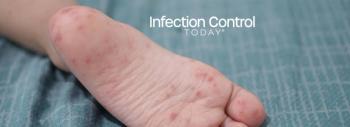
CDC Urges Vigilance: New Recommendations for Monitoring and Testing H5N1 Exposures
With avian influenza A(H5N1) infections surfacing in both animals and humans, the CDC has issued updated guidance calling for aggressive monitoring and targeted testing to contain the virus and protect public health.
On July 8, 2025, the
The CDC advises that anyone exposed to H5N1-infected birds, dairy cows, or other animals, even if wearing the recommended personal protective equipment (PPE), should be actively monitored for symptoms starting immediately after first exposure and continuing for 10 days after the last potential contact.
Symptoms of concern include those typical of acute respiratory infections, such as cough, sore throat, and shortness of breath, along with conjunctivitis signs like eye redness or discharge. Gastrointestinal symptoms, including diarrhea, have also been associated with H5N1 infections. Some of the severe complications include pneumonia, respiratory failure, acute respiratory distress syndrome, multiorgan failure (respiratory and kidney failure), sepsis, meningoencephalitis, and death.
Health officials are urged to promptly investigate any suspected human infections and notify the CDC within 24 hours of identifying a case under investigation. Testing is recommended for individuals who meet both epidemiological exposure criteria and either clinical or public health response triggers. These exposures include close contact within 6 feet of infected animals, direct handling or processing of potentially contaminated animal products, visiting live bird markets linked to infections, or close unprotected exposure to confirmed or suspected human H5N1 cases. Laboratory exposures to the virus also qualify.
“People exposed to HPAI A(H5N1) virus-infected birds, dairy cows, or other animals (including people wearing recommended PPE) should be monitored for signs and symptoms of acute respiratory illness and conjunctivitis (eg, eye irritation, redness, or discharge) beginning after their first exposure and for 10 days after their last exposure.”
Testing involves using RT-PCR assays with H5-specific primers and probes performed by state or local public health laboratories. While routine testing of asymptomatic individuals isn’t generally recommended, exceptions are advised for those at particularly high risk, such as workers who experienced PPE failures while handling infected animals or asymptomatic close contacts of confirmed human cases. In these instances, the CDC supports collecting nasal, oropharyngeal, and optionally conjunctival swabs to help track virus spread.
The CDC also stresses the critical importance of a “One Health” approach, urging collaboration between health departments, state veterinarians, agriculture officials, and wildlife agencies. This integrated strategy aims to capture the interconnections between human, animal, and environmental health, which is vital in managing zoonotic threats like H5N1.
As H5N1 continues to be detected across multiple animal populations, the CDC’s guidance highlights the necessity of rigorous monitoring, swift investigation, and coordinated public health response to limit opportunities for the virus to adapt and spread among people.
Newsletter
Stay prepared and protected with Infection Control Today's newsletter, delivering essential updates, best practices, and expert insights for infection preventionists.






